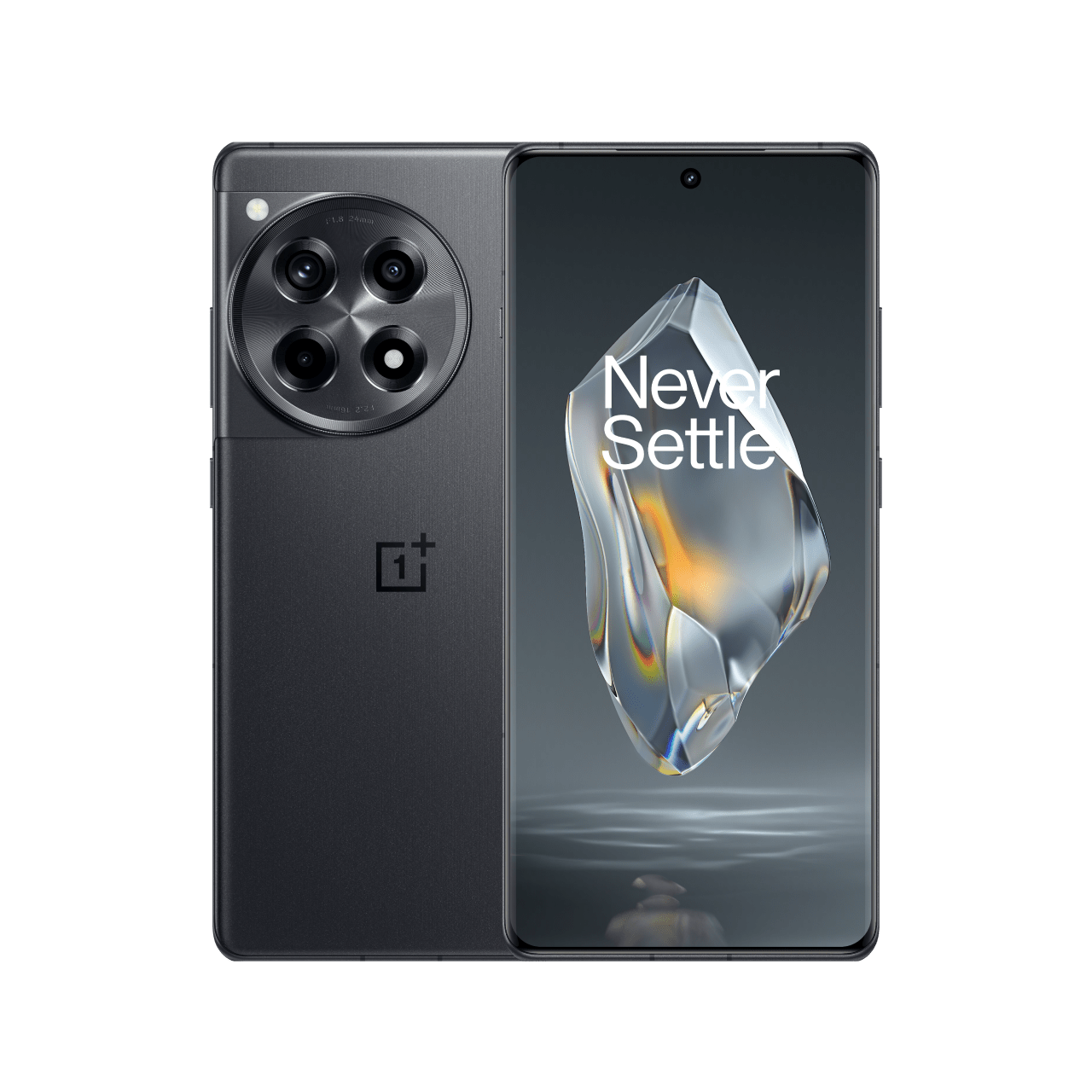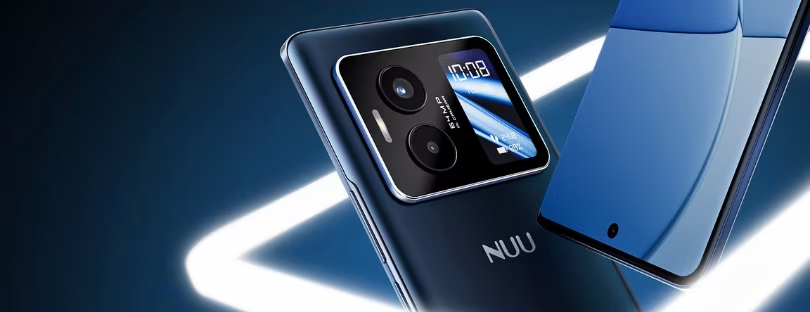
Best large screen phones of 2024
In the ever-evolving world of smartphones, large-screen phones have carved out a significant niche for themselves, offering users an immersive experience for gaming, streaming, and productivity. As we step into 2024, the competition among manufacturers to dominate this segment has intensified, leading to remarkable innovations.
This article delves into the best large-screen phones of 2024, highlighting their key features, technological advancements, and how they stand out from the rest.
What defines a large-screen phone?
Large-screen phones, often known as “phablets,” combine the functionality of a smartphone with the display size of a tablet. These devices are typically characterized by screen sizes exceeding 6.5 inches, providing ample space for detailed visuals and multitasking. The allure of large displays lies not only in their size but also in the quality of the viewing experience they offer, including resolution, color accuracy, and brightness levels.
Top Contenders for Best Large Screen Phones of 2024
2024 has been a groundbreaking year for smartphone innovation, with several models vying for the title of the best large-screen phone. We explore the standout features of each contender, from their display prowess to their processing capabilities, to help you find the device that best suits your needs.
Here are some of the top contenders for the best large-screen phones of 2024, based on a variety of factors such as display size, performance, camera quality, battery life, and price:
Best Overall:
- Samsung Galaxy S24 Ultra: This phone boasts a massive 6.8-inch Super AMOLED display with a 120Hz refresh rate, the powerful Snapdragon 8 Gen 2 processor, an improved 200MP camera system, and a built-in S Pen stylus. However, it’s also the most expensive phone on this list, starting at $1,199.
Best Value:
- OnePlus 11: This phone offers flagship-level specs at a more affordable price tag, starting at $699. It has a 6.7-inch QHD+ AMOLED display, the Snapdragon 8 Gen 2 processor, a triple-lens camera system, and a long-lasting battery.
Best iPhone:
- iPhone 15 Pro Max: Apple’s largest iPhone features a 6.7-inch OLED display with a 120Hz refresh rate, the A17 Bionic chip, a pro-grade camera system with LiDAR scanner, and long battery life. It’s also one of the most expensive phones on this list, starting at $1,099.
Best Camera:
- Google Pixel 8 Pro: The Pixel 8 Pro is known for its excellent camera system, even when compared to more expensive phones. It has a triple-lens camera system with new image processing features, and it takes stunning photos and videos in both bright and low-light conditions. It starts at $899.
Best Foldable:
- Samsung Galaxy Z Fold 5: This foldable phone unfolds into a tablet-sized device with a 7.6-inch display, making it great for multitasking and productivity. It also has a powerful processor, a versatile camera system, and a long-lasting battery. However, it’s also the most expensive phone on this list, starting at $1,799.
Other contenders:
- Asus Zenfone 10: This phone has a unique design with a flip-up camera module, and it also offers a powerful processor, a long-lasting battery, and a competitive price tag.
- Motorola Razr Plus: This foldable phone offers a nostalgic design with a clamshell form factor, and it also has a powerful processor, a decent camera system, and a competitive price tag.
Ultimately, the best large-screen phone for you will depend on your individual needs and budget. Consider what features are most important to you, such as display size, camera quality, performance, battery life, and price, before making your decision.
Innovative Features in 2024’s Large Screen Phones
This year’s large-screen phones have introduced a plethora of innovative features that enhance the user experience. Advances in display technology, such as the adoption of OLED and QLED panels, offer deeper blacks and more vibrant colors. Meanwhile, improvements in battery life and charging speeds ensure that these power-intensive devices can keep up with the demands of heavy usage.
Comparison of Display Technologies
The choice of display technology plays a crucial role in the overall performance of a large-screen phone. In this section, we compare the benefits and drawbacks of OLED, QLED, and LCDs, providing you with the information needed to make an informed decision based on your preferences.
Choosing the right display can be tricky, especially with these three popular contenders. Here’s a breakdown of their benefits and drawbacks to help you make an informed decision based on your priorities:
OLED:
Benefits:
- Unmatched Black Levels: Individual pixels light up, achieving true “off” for perfect blacks and incredible contrast.
- Vibrant Colors: Wide color gamut and saturation for stunning visuals.
- Fast Response Times: Ideal for gaming and fast-paced content.
- Thin and Lightweight: Perfect for portable devices.
- Wide Viewing Angles: Consistent picture quality from almost any angle.
Drawbacks:
- Burn-in Risk: Static images can leave permanent ghosting, a concern for heavy multitaskers or static content viewers.
- Higher Price: Generally more expensive than QLED and LCD options.
- Lower Brightness: Not as bright as QLED, affecting HDR performance and sunlight use.
- Dimming at Low Brightness: Some users find OLED displays uncomfortable at low brightness levels.
QLED:
Benefits:
- High Brightness: Excellent for HDR content and bright rooms.
- Longer Lifespan: Less susceptible to burn-in compared to OLED.
- More Affordable: Typically cheaper than OLED, offering comparable features.
- Wider Size Availability: Easier to find QLED TVs in large sizes.
Drawbacks:
- Black Levels Not as Deep: Blacks appear greyish compared to OLED, resulting in lower contrast.
- Not Self-Emissive: Requires backlight, leading to light bleed and halo effects.
- Viewing Angles Limited: Picture quality can shift depending on the viewing position.
- Motion Blur: May suffer from motion blur during fast-paced content compared to OLED.
LCD:
Benefits:
- Most Affordable: The most budget-friendly option among the three.
- No Burn-in Risk: Immune to permanent image retention.
- Wide Range of Options: Available in various sizes and specifications.
- Decent Brightness: Suitable for most viewing environments.
Drawbacks:
- Inferior Black Levels: Blacks appear more like dark grey, resulting in lower contrast.
- Limited Viewing Angles: Picture quality degrades significantly off-center.
- Thicker and Heavier: Not ideal for portable devices.
- Slower Response Times: May struggle with fast-paced content.
So, which display is right for you?
It depends on your priorities.
- For the best picture quality with ultimate blacks and vibrant colors, but you can tolerate potential burn-in and a higher price tag, OLED is the winner.
- If you prioritize brightness, affordability, and wide size availability, and burn-in risk isn’t a major concern, QLED offers a good balance.
- For the most budget-friendly option, decent brightness, and no burn-in worries, LCD remains a viable choice but be prepared for compromises in picture quality and viewing angles.
Ergonomics and Design
Handling large-screen phones can be tricky, especially with one hand! Fortunately, manufacturers are aware of this challenge and are constantly implementing design considerations to improve ergonomics and user comfort. Here are some key elements they’re focusing on:
Reducing the Perceived Size:
- Curved Edges: These not only add a sleek aesthetic but also make the phone feel narrower in the hand, improving one-handed reach.
- Narrow Bezels: Minimizing bezels creates more screen real estate without significantly increasing the overall size of the device.
- Aspect Ratio Adjustments: Taller and narrower aspect ratios (like 20:9) make reaching the top corners slightly easier.
Enhancing Grip and Comfort:
- Textured Backs: Adding subtle textures or patterns to the back cover improves grip and reduces the risk of accidental drops.
- Lightweight Materials: Using materials like polycarbonate or lightweight aluminum keeps the phone lighter, reducing strain during extended use.
- Strategic Weight Distribution: Balancing the weight towards the bottom can make the phone feel more secure and manageable in the hand.
Software Innovations:
- One-Handed Mode: This software feature shrinks the active screen area and repositions elements closer to your thumb, making one-handed interaction easier.
- Reachability Gestures: Swiping from the edge of the screen can trigger actions like bringing down the notification bar, further eliminating the need for awkward hand stretches.
- Split-Screen Multitasking: This allows you to utilize the large screen effectively by running two apps side-by-side, reducing the need to switch between apps constantly.
Addressing Specific Needs:
- Larger Phones for Specific User Groups: Some manufacturers offer “Max” versions of their flagships with even bigger screens, targeting users who prioritize large displays for media consumption or multitasking.
- Accessories: PopSockets and phone grips can significantly improve one-handed use and comfort, especially for users with smaller hands.
Performance Metrics
performance is crucial for a flawless experience on a large-screen phone. With demanding tasks like gaming, multitasking, and high-resolution media consumption, choosing the right specs becomes essential. Let’s dive into the key performance metrics and their impact:
Processor:
- Consider the latest generation flagship processors: Snapdragon 8 Gen 2 or Apple A17 Bionic for top-tier performance in demanding tasks like video editing and heavy multitasking.
- Mid-range processors like Snapdragon 8 Gen 1 or Apple A16 Bionic offer a good balance between power and affordability, handling most daily tasks smoothly.
- Focus on clock speed and core count: Higher clock speeds and more cores generally translate to faster processing, but consider efficiency ratings as well.
RAM:
- 8GB RAM is a good starting point: Handles most everyday tasks and moderate multitasking well.
- 12GB or more RAM is ideal for power users: Enables seamless multitasking, demanding games, and heavy app usage without slowdowns.
- LPDDR5 RAM is the latest standard: Offers faster data transfer speeds compared to older LPDDR4, improving overall performance.
Storage:
- 128GB is the minimum for most users: Stores essential apps, photos, and videos comfortably.
- 256GB or more is recommended for heavy media consumers: Accommodates large games, 4K videos, and extensive app collections.
- Storage type matters: UFS 3.1 is the latest standard, offering significantly faster read/write speeds compared to older eMMC technology, impacting app launch times and data transfer.
Additional factors:
- Cooling system: Efficient cooling solutions like vapor chambers can prevent throttling and maintain sustained performance under heavy load.
- Software optimization: A well-optimized operating system plays a crucial role in maximizing hardware performance and ensuring a smooth user experience.
Remember: Specs aren’t everything. Real-world benchmarks and user reviews can provide valuable insights into the phone’s actual performance in everyday use scenarios.
Camera Capabilities
Camera capabilities are a major deciding factor for many smartphone users, and large-screen phones are no exception. Manufacturers are packing their flagships with cutting-edge camera technology, but with so many options, choosing the right one can be overwhelming. Let’s explore the key features to consider:
Main Camera:
- Sensor size: Larger sensors (like 1/1.33″ or bigger) capture more light, resulting in better low-light performance and dynamic range.
- Pixel count: While megapixels aren’t everything, higher resolutions (like 50MP or more) offer more detail and flexibility for cropping and editing.
- Lens setup: Most flagships offer multi-lens setups (wide, ultrawide, telephoto) for versatility in various shooting scenarios. Look for features like optical zoom (for lossless magnification) and advanced autofocus systems for capturing sharp images.
- Aperture: Wider apertures (like f/1.8 or lower) allow more light in, improving low-light performance and bokeh effects.
Front Camera:
- Megapixel count: While important, consider factors like sensor size and aperture for better low-light selfies and video calls.
- Autofocus: Autofocus ensures sharp selfies and clear video calls, especially in low-light conditions.
Software Enhancements:
- Computational photography: Advanced algorithms improve image quality, especially in low-light and challenging conditions. Look for features like night mode, HDR, and scene optimization.
- Videography capabilities: 4K or even 8K recording options are becoming common, with some phones offering features like cinematic modes and gimbal stabilization for smooth footage.
Top Contenders:
- Samsung Galaxy S24 Ultra: 200MP main sensor, 10x optical zoom, advanced videography features.
- iPhone 15 Pro Max: 48MP main sensor, LiDAR scanner for depth information, improved cinematic mode.
- Google Pixel 8 Pro: 50MP main sensor, excellent computational photography algorithms, unique camera features like Magic Eraser.
Remember:
- Your photography style matters: Do you prioritize low-light performance, zoom capabilities, or videography features?
- Read reviews and sample images: Get a real-world feel for the camera’s performance before making a decision.
- Don’t just focus on megapixels: Consider the overall camera system and software capabilities for the best results.
By understanding these key features and aligning them with your photography needs, you can choose the large-screen phone that captures your moments perfectly.
Battery Life and Charging
Large screens offer an immersive experience, but they also demand significant power. Let’s delve into the world of battery life and charging solutions for these power-hungry devices:
Battery Life:
- Larger battery capacities: Flagships now boast capacities like 5000mAh or more, offering improved runtimes compared to previous generations.
- Display efficiency: OLED displays generally consume less power compared to LCDs, especially with features like adaptive refresh rates.
- Processor efficiency: Newer processors boast power-saving technologies that balance performance with battery life.
- Software optimizations: Manufacturers optimize their operating systems for better battery management.
Fast Charging Technologies:
- Wired fast charging: Standards like USB Power Delivery (PD) and Qualcomm Quick Charge offer rapid charging speeds, often reaching 50% in 30 minutes or less.
- Wireless fast charging: Technologies like Qi are evolving, offering faster charging speeds (up to 30W) and wider compatibility.
- Reverse wireless charging: Some phones can act as wireless chargers for other devices, offering added convenience.
Looking Ahead:
- Battery technology advancements: graphene and solid-state batteries promise higher capacities and faster charging times in the future.
- AI-powered optimizations: Smarter software could further optimize battery usage based on individual user patterns.
- Wireless charging advancements: Increased range and charging speed could make wireless charging a truly viable alternative to wired solutions.
Choosing the Right Phone:
- Consider your usage: Heavy users need bigger batteries and fast charging. Moderate users might prioritize efficiency over raw charging speed.
- Evaluate charging ecosystem: Do you have compatible chargers and accessories?
- Think future-proof: Opting for phones with newer charging standards could benefit you in the long run.
Remember: Battery life is subjective and depends on individual usage patterns. Reading reviews and user experiences can provide valuable insights into real-world battery performance.
By understanding these trends and aligning them with your needs, you can choose a large-screen phone that delivers both a powerful experience and lasting battery life.
Operating Systems and Software
The operating system and software ecosystem can greatly affect the usability of a large-screen phone. Here, we compare the features and benefits of Android and iOS, while also discussing custom UI innovations that manufacturers have introduced to enhance the user experience.
Android vs. iOS:
- Android: Offers more openness and customization, allowing for deeper user control and wider app selection (including third-party stores). However, this openness can also lead to fragmentation and potential security concerns.
- iOS: Prioritizes simplicity and seamless integration within the Apple ecosystem. Offers tight hardware-software integration for smooth performance and timely updates. However, customization options are limited, and app selection is controlled by Apple.
Key Features for Large Screens:
- Multitasking: Both Android and iOS offer features like split-screen multitasking and picture-in-picture mode to optimize the large screen real estate.
- One-handed mode: Both offer software solutions to make single-handed use on large screens more manageable.
- Stylus support: Some Android phones like the Galaxy S24 Ultra and select Samsung tablets support stylus input for enhanced productivity and creative tasks.
Custom UI Innovations:
- Samsung One UI: Offers a clean and user-friendly interface with features like Edge Panels for quick access to apps and tools.
- Pixel UI: Known for its clean design and focus on Google Assistant integration and unique software features.
- MIUI by Xiaomi: Provides a feature-rich experience with extensive customization options.
Choosing the Right OS:
- Consider your priorities: Do you value openness and customization or prefer a simpler, more integrated experience?
- Think about the app ecosystem: Are there specific apps you need that are only available on one platform?
- Evaluate the UI: Try out different UIs to see which one feels most intuitive and comfortable for you.
Remember: Both Android and iOS offer robust experiences for large-screen phones. Choosing the right one depends on your individual needs and preferences.
5G Connectivity and Its Impact
5G connectivity is becoming increasingly common in large-screen phones, and for good reason. It promises a significant leap in mobile data speeds, offering exciting possibilities for users who prioritize performance and immersive experiences. Let’s delve into the impact of 5G on large-screen phones:
Enhanced User Experience:
- Blazing-fast downloads and uploads: Experience faster app downloads, smoother video streaming, and near-instantaneous cloud syncing.
- Reduced latency: Enjoy lag-free online gaming, responsive cloud applications, and real-time collaboration without delays.
- High-quality streaming: Immerse yourself in high-resolution content on large displays with minimal buffering or interruptions.
- Augmented Reality (AR) and Virtual Reality (VR) applications: 5G’s capabilities pave the way for more immersive and interactive AR/VR experiences on large screens.
Availability and Considerations:
- 5G rollout is ongoing: Coverage varies depending on your location and carrier. Check individual carrier coverage maps before making a purchase.
- Data usage might increase: Be mindful of your data plan, as 5G speeds can lead to higher data consumption, especially with streaming and AR/VR applications.
- Battery impact: 5G can slightly impact battery life due to increased power demands. Consider phones with larger batteries or optimize settings for better efficiency.
Impact on Specific Activities:
- Gaming: Enjoy lag-free multiplayer games and cloud-based gaming with minimal latency.
- Streaming: Experience high-resolution video streaming without buffering or pixelation, even on large displays.
- Productivity: Download large files quickly, collaborate on documents in real-time, and access cloud resources seamlessly.
Looking Ahead:
- Continued expansion: 5G coverage is expected to grow significantly in the coming years, making it a more ubiquitous feature.
- Innovation in applications: As 5G capabilities mature, we can expect even more innovative and immersive applications specifically designed for large screens.
Choosing the Right Phone:
- Assess your needs: Do you prioritize fast downloads, low latency, or high-quality streaming?
- Check 5G availability: Ensure your chosen phone supports your carrier’s 5G network and that you have coverage in your area.
- Consider data usage: Choose a data plan that accommodates your expected 5G usage to avoid exceeding limits.
The Future of Large Screen Phones
The world of large-screen phones is constantly evolving, with exciting innovations brewing on the horizon. Let’s explore some of the most promising trends that could redefine the smartphone experience:
Foldable Displays:
- Beyond tablets: Foldable phones like the Samsung Galaxy Z Fold 5 are already here, offering tablet-sized screens that unfold into compact, pocketable devices. Expect further advancements in durability, hinge mechanisms, and app optimization to make foldables more mainstream.
- Multiple form factors: Imagine phones that fold not just once, but twice or even thrice, offering even more versatility and screen real estate. This could revolutionize content consumption, multitasking, and mobile gaming.
Augmented Reality (AR) Integration:
- Beyond the screen: Imagine overlaying digital information onto the real world through your phone’s display. This could transform navigation, shopping, gaming, and more, creating truly immersive experiences on large screens.
- Advanced sensors and processing: Imagine phones with depth sensors and powerful processors that seamlessly blend digital elements with the physical world. This could pave the way for groundbreaking AR applications in various fields.
Under-display Technologies:
- Seamless design: Imagine phones with hidden cameras and sensors under the display, achieving a truly bezel-less design. This could offer more screen real estate without increasing the phone’s physical size.
- Technical challenges: While prototypes exist, achieving perfect clarity and functionality for under-display cameras and sensors requires overcoming technical hurdles.
AI-powered Enhancements:
- Personalized experiences: Imagine phones that adapt to your usage patterns, automatically adjusting settings, optimizing performance, and suggesting relevant content based on your needs.
- Contextual awareness: Imagine phones that leverage AI to understand your surroundings and context, offering relevant assistance and information. For example, your phone might suggest a restaurant when you’re near one or provide live translation when you’re traveling.
Beyond Hardware:
- Focus on sustainability: Expect manufacturers to prioritize eco-friendly materials, energy-efficient designs, and responsible sourcing practices.
- Security and privacy: As technology advances, robust security measures and user privacy will remain paramount concerns.
Remember: These are just a glimpse into the potential future. The actual pace and direction of innovation will depend on various factors, but one thing is certain: the future of large-screen phones is brimming with exciting possibilities that will continue to revolutionize the way we interact with the mobile world.
Buying Guide
Choosing the right large-screen phone can feel overwhelming, but by considering your needs and priorities, you can make an informed decision that aligns perfectly with your usage habits. Here’s a comprehensive buying guide to help you navigate the process:
1. Assess Your Needs:
- What is your primary usage? Entertainment (gaming, streaming), productivity (multitasking, work), photography, social media, or a combination?
- How important is screen size and quality? Do you prioritize a massive display for immersive experiences, or is a comfortable one-handed grip more crucial?
- What is your budget? Flagships offer top-tier specs, but mid-range options can provide excellent value.
- Do you have specific brand preferences or software ecosystem considerations? (Android vs. iOS)
2. Prioritize Key Features:
- Processor and RAM: Ensure smooth performance for your intended use. Flagship processors and 8GB+ RAM are ideal for demanding tasks.
- Battery life: Consider your usage patterns and prioritize larger batteries (5000mAh+) for heavy users.
- Camera: Evaluate megapixels, sensor size, and features like optical zoom based on your photography needs.
- Storage: 128GB is a good starting point, but consider 256GB+ for extensive media or app usage.
- 5G: If you reside in an area with good coverage and prioritize future-proofing, a 5G-enabled phone might be valuable.
3. Research and Compare:
- Read reviews and watch comparison videos from trusted sources.
- Check out user experience forums and feedback.
- Compare the specs and features of different models within your budget.
- Don’t be afraid to visit physical stores and try out the phones in person.
4. Consider Additional Factors:
- Design and ergonomics: Opt for a comfortable grip and lightweight materials, especially for one-handed use.
- Software updates: Prioritize brands with a good track record of timely software updates for security and feature enhancements.
- Warranty and after-sales support: Choose a brand with reliable customer service and warranty options.
5. Where to Buy:
- Carrier stores: Often offer deals and bundled plans.
- Electronics retailers: Wider selection and competitive prices.
- Online retailers: Convenient comparison and price options, but research reputable sellers.
- Manufacturer websites: Direct sales with potential exclusive offers and guarantees.
Bonus Tip: Utilize price comparison websites and set price alerts to snag the best deals.
Remember: The perfect phone is the one that aligns with your specific needs and preferences. Don’t get swayed by hype or marketing; prioritize features that matter most to you, and enjoy the incredible experience that large-screen phones offer!
Conclusion
The best large-screen phones of 2024 offer a blend of innovation, performance, and value. Whether you prioritize display quality, camera capabilities, or battery life, there’s a device that meets your needs. As technology continues to evolve, we can expect even more impressive features and designs in the years to come.











